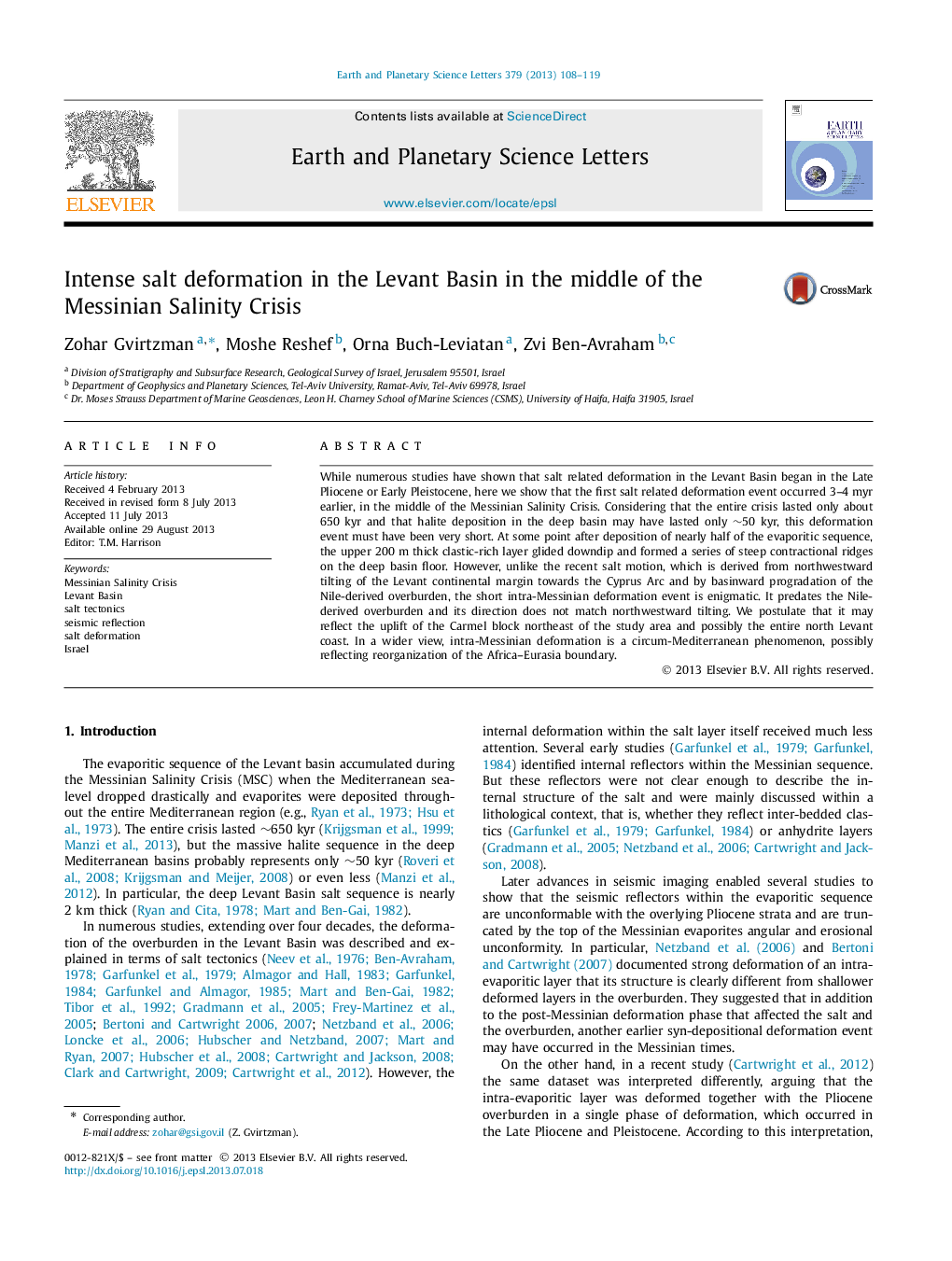| Article ID | Journal | Published Year | Pages | File Type |
|---|---|---|---|---|
| 6430069 | Earth and Planetary Science Letters | 2013 | 12 Pages |
â¢New seismic data indicate that Messinian salt in the Levant Basin first deformed during the MSC.â¢The observed SW-NE shortening dos not match recent NW tilting of the basin towards the Cyprus Arc.â¢Also, pre-Nile deformation cannot be explained as salt flow northeastwards away from the Nile Cone.â¢Our interpretation of southwestwards gliding reflects uplift along the northern Levant coasts.â¢It indicates Messinian activity along Mt Carmel and limits the beginning of tilting towards Cyprus.
While numerous studies have shown that salt related deformation in the Levant Basin began in the Late Pliocene or Early Pleistocene, here we show that the first salt related deformation event occurred 3-4 myr earlier, in the middle of the Messinian Salinity Crisis. Considering that the entire crisis lasted only about 650 kyr and that halite deposition in the deep basin may have lasted only â¼50 kyr, this deformation event must have been very short. At some point after deposition of nearly half of the evaporitic sequence, the upper 200 m thick clastic-rich layer glided downdip and formed a series of steep contractional ridges on the deep basin floor. However, unlike the recent salt motion, which is derived from northwestward tilting of the Levant continental margin towards the Cyprus Arc and by basinward progradation of the Nile-derived overburden, the short intra-Messinian deformation event is enigmatic. It predates the Nile-derived overburden and its direction does not match northwestward tilting. We postulate that it may reflect the uplift of the Carmel block northeast of the study area and possibly the entire north Levant coast. In a wider view, intra-Messinian deformation is a circum-Mediterranean phenomenon, possibly reflecting reorganization of the Africa-Eurasia boundary.
